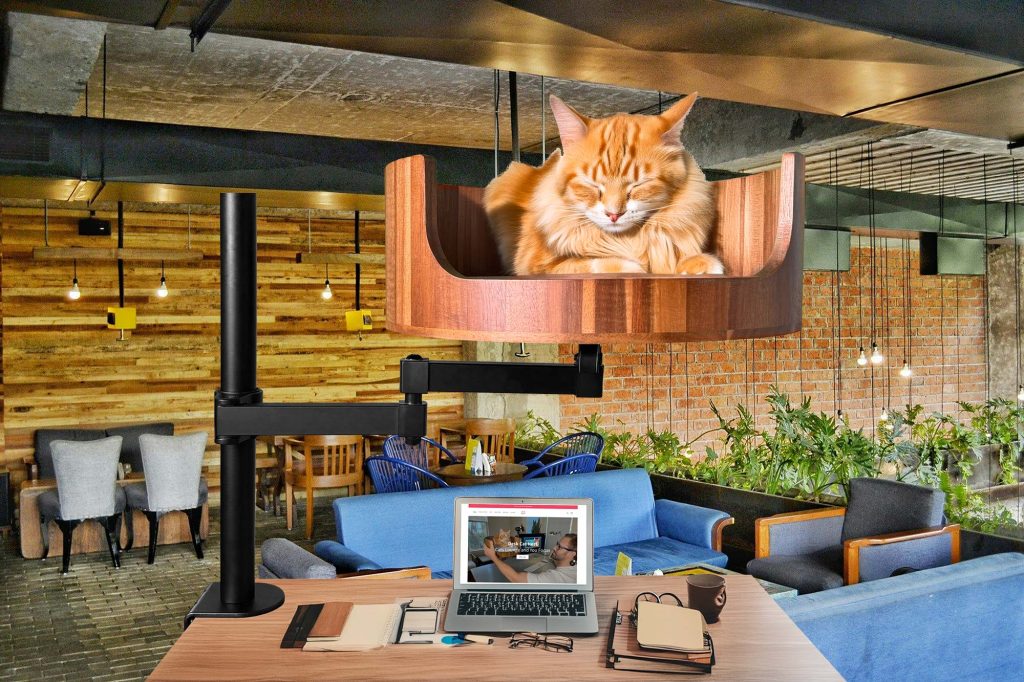Have you ever noticed your cat’s tail vibrating as they approach you? This mysterious feline behavior is actually a form of communication that many cat owners overlook. By understanding the significance of a cat’s tail vibrate, we can decipher their feelings and deepen our bond with our furry friends.
In this article, we will explore the various meanings behind a cat’s tail vibrate, from excitement to frustration. We will also delve into the science behind this behavior and how it relates to a cat’s overall body language. By the end of this article, you will have a better understanding of how to interpret your cat’s tail movements and respond accordingly, leading to a stronger and more harmonious relationship with your beloved feline companion.
1. Tail vibrations in cats are a form of communication that can convey various emotions and signals.
2. Cats use tail vibrations to show excitement, anticipation, or agitation, depending on the context.
3. Understanding the meaning of tail vibrations can help cat owners better interpret their pet’s feelings and respond accordingly.
4. Paying attention to the speed, direction, and intensity of tail vibrations can provide valuable insights into a cat’s mood.
5. By observing and learning about feline communication, cat owners can strengthen their bond with their pets and provide them with more fulfilling interactions.
Why Do Cats Wag Their Tails?
Cats use their tails as a way to communicate their emotions and intentions. Tail wagging can indicate various moods such as excitement, fear, aggression, or contentment. For example, a slow and gentle wag may suggest that a cat is feeling relaxed and comfortable, while a fast and aggressive wag could signal agitation or anger. It’s essential to pay attention to the context of the tail wagging along with other body language cues to interpret what a cat is trying to convey.
Types of Tail Vibrations
There are different types of tail vibrations that cats use to communicate with their owners or other animals. One common form is known as the “twitch” wherein a cat’s tail tip shakes slightly while the rest of the tail remains still. This often indicates excitement or anticipation, such as when a cat is about to pounce on a toy. Another form of vibration is the “whip,” which involves the tail thrashing rapidly from side to side. This typically signifies irritation or aggression, and it’s essential to give the cat some space in such situations to avoid potential conflict.
Interpreting Tail Vibrations
Understanding the meaning behind tail vibrations can help cat owners better communicate with their feline companions. For instance, if a cat’s tail is vibrating while being petted, it could be a sign that the cat is overstimulated and may need a break. On the other hand, a cat that greets you with a gently vibrating tail is likely showing affection and happiness. By paying attention to these subtle cues, cat owners can strengthen their bond with their pets and ensure a harmonious relationship.
Frequently Asked Questions
How can Desk Cat Nest help with cat tail vibrate?
Desk Cat Nest can provide your cat with a cozy and comfortable space to relax, which may help reduce stress and anxiety that could be causing cat tail vibrate. Additionally, having a dedicated spot for your cat to rest may help prevent overstimulation that can lead to excessive tail movements.
Is Desk Cat Nest suitable for all cats experiencing tail vibration?
Desk Cat Nest is designed to provide a comfortable and safe space for most cats. However, if your cat’s tail vibrate is due to a medical condition, it’s important to consult with a veterinarian before using Desk Cat Nest as a solution.
How do I introduce my cat to Desk Cat Nest?
To introduce your cat to Desk Cat Nest, place it in a quiet and accessible area where your cat likes to rest. You can also encourage your cat to explore the nest by placing treats or toys inside. It may take some time for your cat to get used to the nest, so be patient and allow them to explore at their own pace.
Can Desk Cat Nest be used in conjunction with other calming techniques?
Desk Cat Nest can be used in conjunction with other calming techniques, such as pheromone diffusers or calming sprays. Combining these methods can help create a soothing and stress-free environment for your cat, which may help reduce tail vibrate.
How do I clean and maintain Desk Cat Nest?
To clean Desk Cat Nest, simply remove the cushion and wash it according to the manufacturer’s instructions. You can also wipe down the nest with a damp cloth to remove any dirt or debris. Regularly cleaning and maintaining Desk Cat Nest will ensure that it remains a comfortable and inviting space for your cat.
In conclusion, the Desk Cat Bed is an ideal solution for addressing cat tail vibrate issues in your feline companion. By providing a comfortable and secure space for your cat to rest and relax, the Desk Cat Bed can help reduce stress and anxiety, leading to a decrease in tail vibrations. Additionally, the raised design of the bed allows for easy observation of your cat’s behavior, making it easier to monitor and address any potential issues. Overall, the Desk Cat Bed is a valuable choice for cat owners looking to improve their cat’s well-being and behavior.


